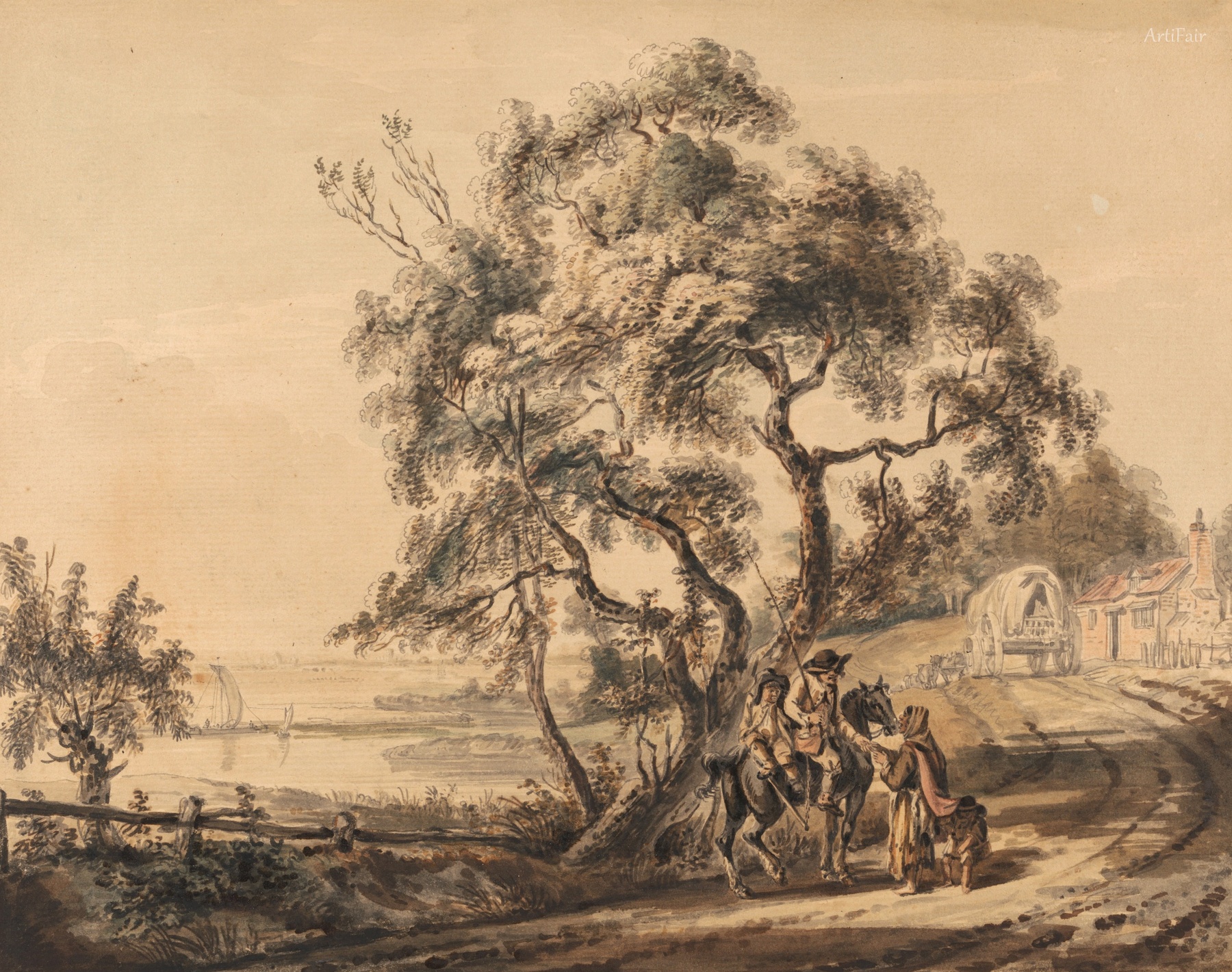
Art Appreciation
This evocative 18th-century landscape captures a rustic, tranquil scene bathed in soft sepia tones and delicate ink washes. The composition leads the eye along a curving dirt road where two figures engage—a mounted man and a standing woman—likely embodying the title’s ‘fortune-teller’ motif. Towering, textured trees arch gracefully above them, their gnarled branches seeming to whisper secrets as they frame an expansive vista beyond, revealing distant waters and sails. The interplay of shadow and light is masterfully executed through subtle gradations of brown ink, lending the scenery a quiet moodiness and hinting at the latent mysteries of this pastoral world.
The drawing’s finesse lies in its layered pen work and gentle washes, which capture the natural forms with both spontaneity and careful observation. The cottages and a horse-drawn wagon in the background suggest everyday rural life, contrasting with the more intimate foreground encounter. This scene evokes curiosity and invites the viewer to imagine the narrative—perhaps of fate, fortune, and the simple lives intertwined at this waterside crossroads. It stands as a beautiful example of mid-18th-century British landscape artistry, combining documentary charm with subtle storytelling and a nostalgic palette that resonates emotionally across centuries.